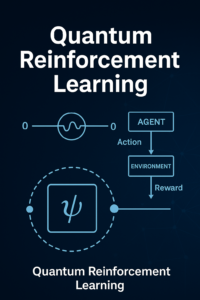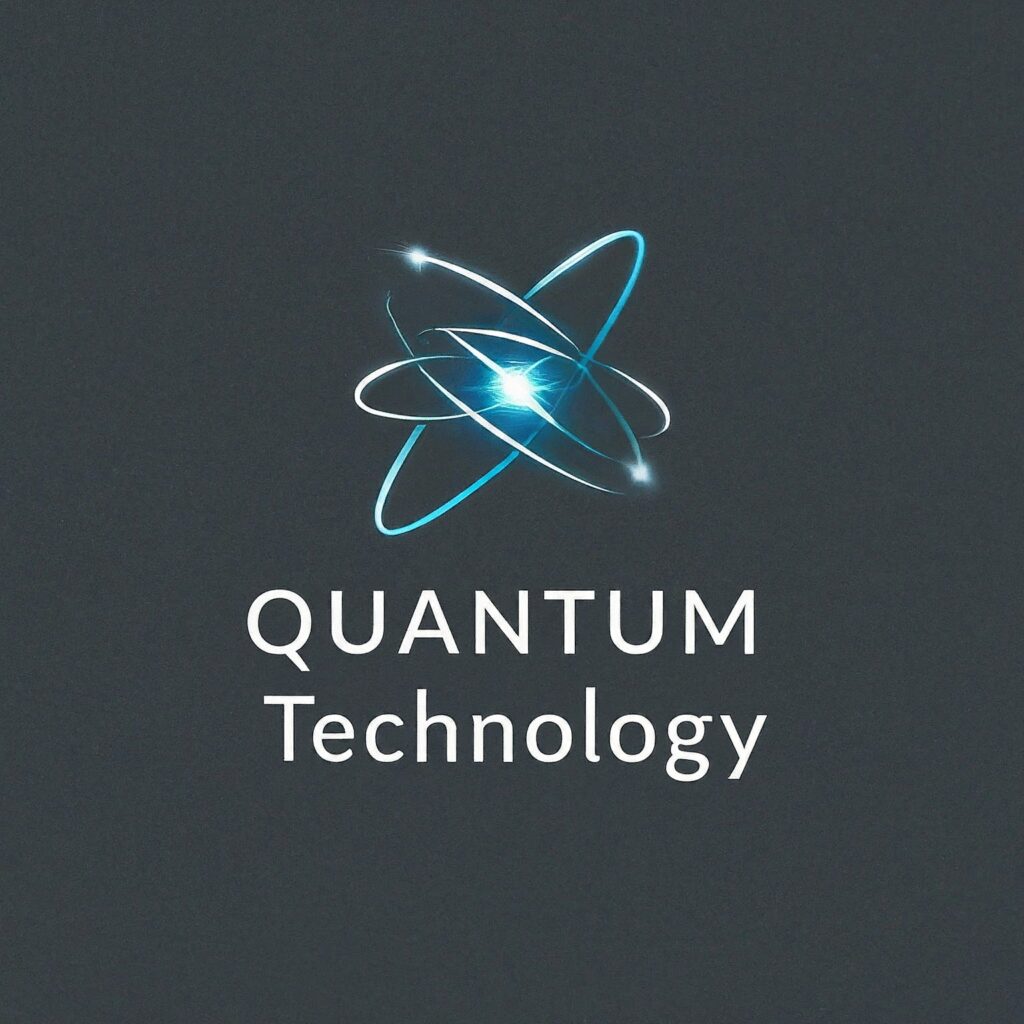Explore Quantum Reinforcement Learning — the fusion of quantum computing and reinforcement learning. Learn how QRL accelerates optimization, improves decision-making, and shapes the future of AI.

Quantum Computing With Reinforcement Learning
Quantum computing and reinforcement learning (RL) are two of the most rapidly advancing fields in emerging technology. Individually, both are powerful: quantum computing promises exponential computational speed-ups, while RL drives intelligent agents to learn optimal actions through interaction with an environment. But when these two domains intersect, they give rise to a highly promising research area — Quantum Reinforcement Learning (QRL). This fusion aims to create algorithms that learn faster, discover deeper patterns, and solve complex decision-making problems beyond the capability of classical systems.
This article examines the core ideas behind quantum computing, reinforcement learning, and how their integration can unlock the next era of computation and intelligent systems.
1. Understanding the Foundations: Quantum Computing
Traditional computers store information in binary bits — 0 or 1. Quantum computers, however, operate using quantum bits (qubits), which follow the principles of quantum mechanics.
Key Quantum Concepts Relevant to RL
-
Superposition
A qubit can exist in a combination of states (both 0 and 1 simultaneously). This allows quantum systems to process many possibilities in parallel. -
Entanglement
When qubits are entangled, the state of one qubit is connected to the state of another, regardless of physical distance. This enables extremely rich representation of information. -
Quantum Parallelism
A quantum processor can evaluate multiple trajectories or policies at the same time, something classical RL struggles with due to huge state-action spaces. -
Quantum Measurement
Observing a quantum system collapses its state. Designing RL algorithms that use quantum properties without destroying them is a major research challenge.
Quantum computing excels in optimization, search, and sampling — tasks that lie at the heart of reinforcement learning.
2. A Quick Overview of Reinforcement Learning
Reinforcement learning is a branch of machine learning in which an agent interacts with an environment to learn a policy that maximizes cumulative reward.
Core Components of RL
-
Agent: Learner and decision-maker
-
Environment: The system the agent interacts with
-
State (s): Current situation
-
Action (a): Decision taken by the agent
-
Reward (r): Feedback for an action
-
Policy (π): Strategy for choosing actions
-
Value Functions (V, Q): Expected reward estimates
Modern RL is powerful but computationally expensive, especially in environments with huge search spaces, many variables, or high-dimensional continuous states.
Quantum computing offers capabilities that can address these limitations.
3. Why Combine Quantum Computing and Reinforcement Learning?
The combination of quantum computing and RL is motivated by three main advantages:
- Faster Exploration of Large State Spaces
Quantum parallelism allows exploration of multiple states at once. In classical RL, exploration is sequential or relies on sampling methods like epsilon-greedy or Monte Carlo. Quantum systems naturally explore a broader policy space. - More Efficient Optimization
At the core of RL is optimization — finding the best policy. Quantum algorithms like:a. Grover’s algorithm
b. Quantum annealing
c. Variational Quantum Eigensolvers (VQE) offer exponential or quadratic speedups for search and optimization tasks. - Better Function Approximation
Approximation is critical for deep RL, especially for continuous spaces. Quantum neural networks (QNNs) and quantum kernels can potentially approximate complex functions with fewer parameters. In high-dimensional systems, quantum-enhanced approximation can outperform classical neural networks.
4. Approaches to Quantum Reinforcement Learning
Researchers have proposed several frameworks for integrating quantum mechanics into RL. The most popular include:
A. Quantum-Enhanced RL (QERL)
This approach uses quantum algorithms to speed up individual components of classical RL:
-
Quantum search for action selection
-
Quantum sampling for exploration
-
Quantum optimization for policy gradients
Here, the RL framework is classical, but certain operations are accelerated by quantum routines.
B. Quantum Native RL (QNRL)
In this approach, the RL model itself is quantum:
-
States represented as quantum states
-
Policies implemented through quantum circuits
-
Rewards encoded into quantum operations
This model aims for fully quantum RL, leveraging superposition and entanglement in decision-making.
C. Hybrid RL with Variational Quantum Circuits
This is the most practical approach today because current quantum hardware is “noisy” (NISQ era). Hybrid RL uses classical optimization combined with quantum circuit evaluation:
-
A quantum circuit approximates value functions or policy functions
-
A classical optimizer updates circuit parameters
-
Gradients may be computed using quantum methods like parameter-shift rules
This hybrid approach is already being tested in robotics, finance, and multi-agent environments.
5. Applications of Quantum RL
Quantum RL is still in its early stages, but several real-world applications are emerging rapidly.
A. Robotics and Autonomous Systems
Robots require fast decision-making in dynamic environments. QRL can provide:
-
Faster policy learning
-
Better adaptation
-
Improved path planning
Quantum RL could help robots navigate complex terrains or optimize control strategies.
B. Financial Portfolio Optimization
Markets involve high-dimensional spaces and dynamic decision processes — perfect for QRL. Potential uses include:
-
Risk-aware trading strategies
-
Quantum-accelerated reinforcement trading agents
-
Robust portfolio management under uncertainty
C. Quantum Chemistry
RL combined with quantum computing can discover:
-
Molecular structures
-
Reaction pathways
-
Optimized energy configurations
This helps accelerate drug discovery and materials science.
D. Smart Energy and Grid Optimization
Quantum RL can optimize:
-
Energy consumption
-
Power distribution
-
Demand forecasting
These are large-scale optimization challenges where classical RL often fails.
E. Multi-Agent Systems
Quantum entanglement may allow multiple RL agents to share correlated information efficiently, improving cooperative decision-making.
6. Challenges and Limitations
Although promising, QRL faces significant hurdles:
A. Limited Quantum Hardware
Current quantum computers have:
-
Noisy qubits
-
Limited coherence time
-
Small number of qubits
This restricts real-world QRL deployment.
B. Algorithmic Complexity
Quantum RL requires designing algorithms that maintain quantum states long enough for learning. This requires new mathematical models.
C. Reward Encoding and Measurement
Quantum systems collapse when measured, making reward extraction complex. Designing methods for safe measurement is active research.
D. Hybrid Systems Are Hard to Tune
- Combining classical and quantum optimizers introduces instability and gradient noise.
- Despite these challenges, the field is evolving rapidly with ongoing research at Google, IBM, MIT, and several quantum startups.
7. Future Directions
Quantum RL represents a long-term vision where:
-
Quantum processors evaluate large policy spaces instantly
-
Deep Q-networks are replaced by quantum neural networks
-
Entangled multi-agent systems coordinate intelligently
-
Optimization-heavy problems become trivial
As quantum hardware improves, QRL may become central in AI, robotics, cybersecurity, drug design, and even scientific discovery. The convergence of quantum computing and reinforcement learning could redefine how intelligence is built and understood.
